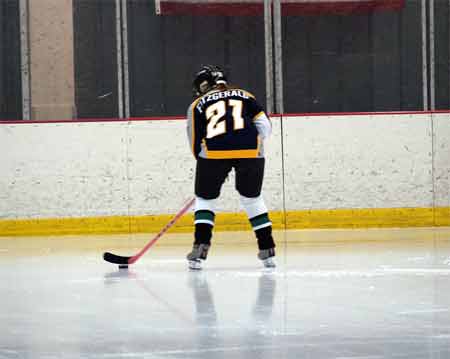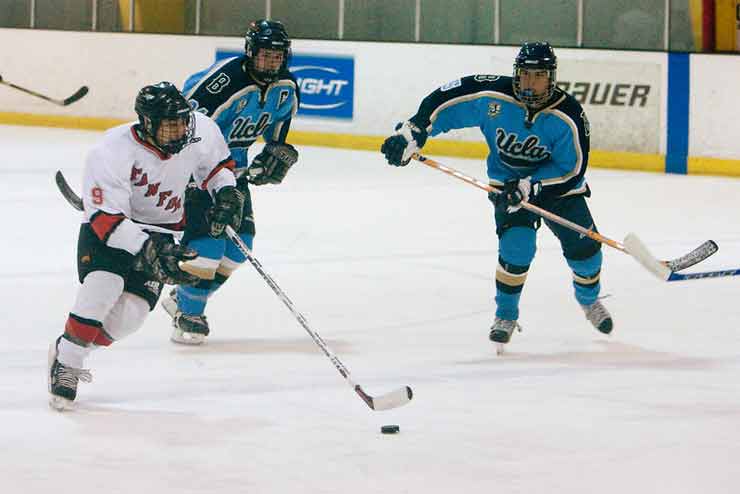Hockey, be it roller or ice, recreational or professional, requires fit and hockey skates that are securely attached. Your hockey laces ensure smooth fit, so that you can make fast turns and quick stops on the sleek surface. Either regular or waxed skate laces are selected, the correct length make you tie the skates to the top eyelet, and support and protect your legs against injury. Check your hockey skates for the right lace length if you have to buy new laces.
Measure and record the distance from the two lower eyes closest to the toe with a tape measure.
Count the eyelets on one side of the boot of the skate. The number of eyelets varies depending on the size, style and brand of the skate.
Multiply the measure by the number of eyes and multiply it by two. This gives you the entire eye-to – eye measurement from the bottom to the top of the boot.
Add 18 inches to the measurement to take into consideration the free ends necessary to tie the laces. The base length of the laces is shown by this number. Then round the next lace size.

Tips
Lacks in a number of sizes are available. In general, children’s skates need 36 to 54 inches of splitting; junior skates need 72 or 84 inches of splitting splitting and adult sizes need 84 to 96, 108 to 120 or 130-inch splitting splits. Remove the old laces from the skates, and measure with a tape measurement. Length diagrams are usually available on the website when ordering online laces.
Alerts
Put your skates tightly into pieces, using a splitting tool. If the laces are too loose, when you turn or stop fast, you risk a sprained or broken ankle. If the lace is too long, wrap it around the top of the skate once before tying it tightly. This prevents the laces from getting tangled in and out of your skates.
Waxed against non-waxed spots-the differences

Other than colour, you can choose two types of laces to lace with – waxed or not waxed.
Non-waxed spots – standard rope spots. It comes in every colour under the sun and is similar to laces found in shoes or cleats, but they will be thicker and harder to cope with the abuse on the rink. I prefer not waxed, because i have a lot of lacing experience and do not require the additional hold / handle waxed laces.
Flexibility – easier to tie the skate, less rigid to flex the hands in your boot.
Benefits – do not hold tightness or wax, harder to grip
Waxed spots – waxed spots have a thin layer of wax applied throughout the lace length. This gives them a sticky, tacky sensation. Every set of eyelets you tighten around the lace when you tie your skates, the wax grips and seals that tightness so that you easiest move up a set of eyelets, without having to keep your hands pressed. Waxed laces certainly do more to maintain any tightness that you lay in, but they are also harder to tie up while grabbing each eyelet up. If you try to get your kid to bind their skates for the first time, this might be a good choice.
Pros – hold tightness better, last longer since moisture is not absorbed, tighten certain areas more than unwaxed, do not stretch.
Conditions – wax can be harder to tie up and untie, leaving you the worst of both worlds, and can leave waxy residues on hands.
